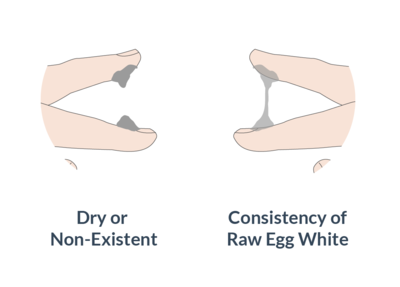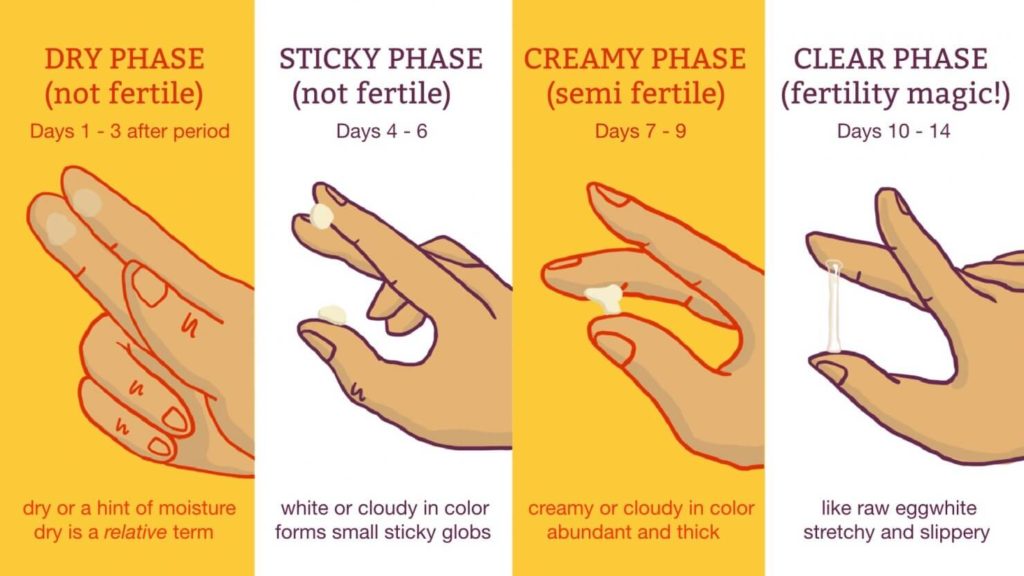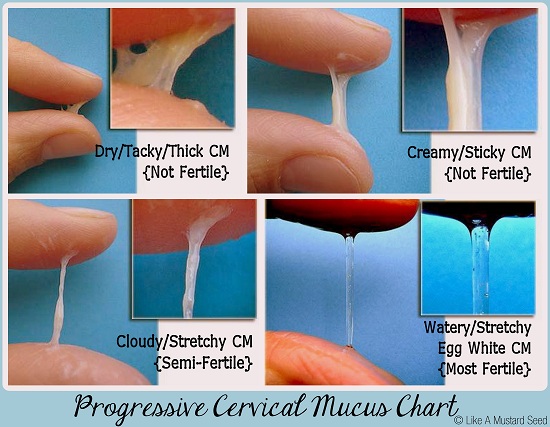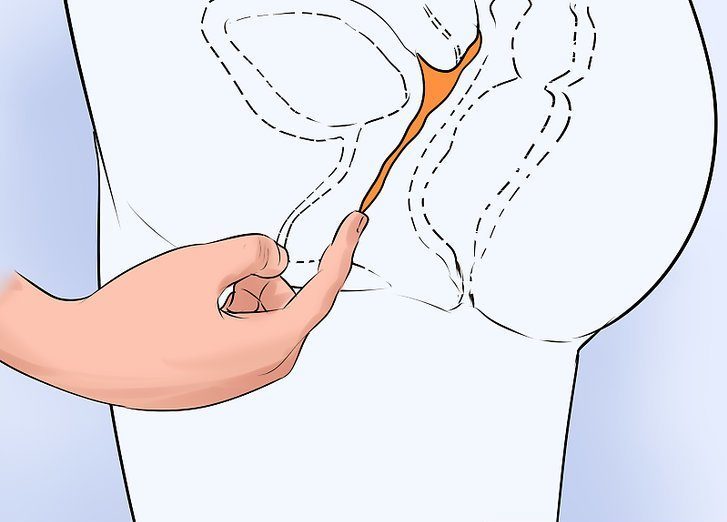What Every Woman Must Know: Cervical Fluid, Ovulation and Getting Pregnant
Are you feeling dry down there? If your body isn’t producing enough cervical
fluid, you may find it hard to take in.

Even though you may confirm your ovulation with a rise in Body basal temperature,
if no fertile cervical fluid was present before ovulation, pregnancy will be
impossible.
WHY?
That’s because the vaginal environment is acidic and it will kill the sperm
before it gets the chance to reach the egg.
But the fertile cervical fluid will create an alkaline environment and makes
the sperm to swim and then fertilization (pregnancy) can occur.
What should your ovulation fluid look like?
The most fertile type of cervical fluid is the wet, clear, stretchy stuff that
resembles raw egg whites or water gushes.

If you’re noticing thick, sticky cervical fluid throughout your fertile window,
you still might have a hard time getting pregnant, as sticky cervical fluid is
not very sperm-friendly.
That you’re not seeing any fertile cervical fluid on your underwear, doesn’t mean they’re not there.
Although, if after checking daily, you can’t find any or enough
fertile cervical fluid then you’ll need to get to the root of the particular
cause that is affecting you.
Following these simple steps before taking greater measure:
- Drink more water
- Eat healthily
Here is why there may be non-availability of fertile cervical fluid:
Low water in-take – your lack of cervical fluid may be due to dehydration. Drink enough water. To know the amount of water your body needs – take your weight in pounds and divide by two. During the dry season, you maybe needing more water.
What can lead to dry ovulation?
Here are some common reasons for not having enough fertile-quality cervical
fluid:
Low water in-take – dehydration can lead to lack of cervical fluid. So, endeavour
to take enough water most especially during the dry season. This is a simple
calculation that can guide you to know the amount of water to take: measure your
body weight in pounds, divide it by two and multiply by 0.03, what you get is the
amount of water you should be taking daily. You may need more that the quantity you
get in the dry season.
Diet/Lifestyle – ensure you’re taking a balanced diet which should include enough
essential fatty acids. For more information on dietary recommendations and herbal supplements that can increase cervical fluid, click here to talk to us on WhatsApp.
Being Underweight – you may be asking yourself what the body weight has to do
with this, it has a lot. If you’re underweight (if your BMI is less than 19), your
body may not be producing enough estrogen to produce fertile cervical fluid. Being
underweight can interfere with ovulation.
Douching – I really want to believe that most women in this time no longer do this,
it is a good measure – please DON’T DOUCHE! It will not only wash away precious
cervical fluid, but also the good bacteria that is necessary for vagina health.
Douching increase your chances of vaginal infection, so also vagina deodorants.
Trust me you smell nice down there and if you don’t, you may have a vaginal
infection, and using “feminine hygiene” products will only make it worse.
Certain Medications – some medications can have the side effects of drying up
your cervical fluid. If you’re on any of these medications, ask your doctor if
they can be replaced, and if that is not possible, ask to know how to suppress
the side effects:
- Antihistamines and allergy medications
- Cough suppressants and cold medicines
- Some fertility medications, including Clomid
- Some anti-depressants
- Some sleep aids
Vaginal Infection – if you have a vaginal infection, you may notice a thick, sticky
cervical fluid throughout your cycle, but unfortunately, this kind of cervical fluid
is hostile to sperm. If you think you have a vaginal infection, kindly talk to your
doctor as soon as you can.
Hormonal Imbalance – the term hormonal imbalance can refer to a lot of things but the
truth is they are common. If your menstrual cycles are irregular or consistently
anovulatory, or you notice any other abnormalities in your cycle(such as consistently
low basal temperature or short luteal phase) or if no matter what you do you experience
any of these:
- feeling tired all the time, or anxious,
- depressed, or irritable,
- having low libido,
- persistent weight gain or loss of muscle mass,
- poor sleep patterns, and
- digestive problems, among other symptoms
you may want to get consider getting your hormones tested.
Alternatively, many people have great success working with holistic practitioners
such as naturopaths, herbalists, and acupuncturists to solve hormonal imbalances.
If you think you may have a hormonal imbalance, it’s up to you to decide the route
that’s best for you. But going our route of naturopath will do you no harm but good
Click here to know how to correct your hormonal imbalance the natural way.
As you may probably know, that cervical fluid is an excellent gauge of a woman’s fertility.
I did highlight the importance of the cervical fluid as it relates to your fertility.
Harnessing yourself with this information can let you know this about your body and fertility just from the cervical fluid.

But wait a minute. it comes from down there, “isn’t that gross”, “isn’t that dirty”?
the answer to both questions is NO, it’s not gross, and it’s not dirty.
Cervical fluid is a natural normal secretion that your body makes for a very important purpose.
It is not a “waste” product – it is gold.
How to identify the fluid is what this section is all about, especially if you didn’t get to see it in your underwear.

Here is what you’ll be needing:
- Hand mirror
- Clean towel
- Soap and water
Then proceed:
First, wash your hand
You may already know how your vagina looks like and if you’re in the camp of those who do not, there’s an extra step.
Grab a hand mirror – if the mirror is dirty, wash your hand again.
Get naked from the waist down – think as though you’re in the Gynaecologist office, but much less unpleasant.
Sit or squat on a clean towel on the floor and hold the hand mirror in between your legs to get a better view of your vulva (external genitalia).
Have a good look at your vagina, spread your labia apart – you may see your clitoris, vaginal opening, and you may see your urethral opening. Neat huh?
You may even see some cervical fluid at the vaginal opening.
Now see where your vaginal opening is? Gently slide one clean finger inside, see how that feels? Okay, now you know WHERE to stick your finger when checking your cervical fluid internally.
Crouch in a squatting position, and place one or two (if they fit) fingers in your vagina, until you feel something like the tip of a nose (if you are fertile it might be much softer). This is your cervix! The place from whence all cervical fluid hails! The Motherland!
Now draw your finger(s) gently out of your vagina and have a look at them. They will be slightly damp, because the vagina is a mucous membrane, like the inside of your mouth, so wetness is a given. Other than that, is there any “substance” on them? Anything that looks like children’s toothpaste, or hand lotion, or raw egg whites?
If so … there is your cervical fluid!!!! You found it! Hurray!
If you don’t find it, any of these may be happening, you may be:
a) on the pill,
b) in the pre-ovulatory infertile phase of your cycle, before you’ve started to make cervical fluid, or
c) in the post-ovulatory infertile phase of your cycle, after ovulation, and your body may have stopped making cervical fluid for the remainder of your cycle.
Cervical fluid is a natural substance produced by your cervix; it is made of protein,
water, sugar, and electrolytes. It is sometimes referred to as cervical mucus or discharge.
But I will urge you not to refer to it as discharge; we don’t refer to men’s reproductive
fluid as discharge. The cervical fluid is alkaline in nature, just as the semen and they serve the same purpose – to keep sperm alive.
Cervical Fluid helps the sperm in these ways:
- It provides a thriving environment for the sperm. The normal vaginal environment is slightly acidic in nature and hostile to sperm.Fertile cervical fluid is alkaline like the semen and provides an enabling environment for the sperm.
- It sustains the sperm, while the sperm swims up the cervix to reach the egg in the fallopian tube and also provides nutrition to the sperm.
- It provides an easy pathway for the sperm to swim and filters out irregular sperm.
All these the infertile cervical fluid doesn’t do. Instead, it becomes an obstacle to the sperm.
Are you still having irregular or no menstruation? Then you will need to address that first. Click here now, so we can chat directly on WhatsApp.
Cervical Fluid Pattern Changes
Cervical fluid goes through different changes at every menstrual cycle. And they are as follows:
Menstruation – bleeding happens for 3 to 7 days. It varies from woman to woman. During this period there may and may not be cervical fluid present.
None – this happens after your period. Not so many things happen down there for most women.
Sticky – around day seven after your period, your cervix will start producing a sticky or pasty kind of cervical fluid. It may look like a light paste, not a fluid, but it is referred to as cervical fluid. What this means is that the period of fertility has begun as the sperm can now survive in the infertile cervical fluid before the production of the fertile cervical fluid. Sperm can live up to five days in the fertile cervical fluid.
Creamy – as your circle progresses, your estrogen level increases and so also with the water content of your cervical fluid – bringing it from sticky to creamy.
Eggwhite – eggwhite cervical fluid is called egg white because it looks like raw egg white. It is clear, slippery and can stretch up to an inch or more between a finger and a thumb. THIS IS THE REAL FERTILE STUFF. This special fluid can keep the sperm alive for up to 5 days inside your body.
Watery – sometimes the high water content of a cervical fluid can make the egg white look like water. It is clear, slippery and doesn’t hold a shape. You’ll know it is there by the very wet sensation in your vagina, and you may even feel like you’ve started your period.
Now, you’ve just learnt about cervical fluid. If you don’t know how to check it, please refer to the email that was sent to you yesterday.
One more thing, you need to keep tab of your unique pattern of cervical fluid every cycle.
By doing this, it will help you provide a window into the state of your fertility.
Timing is everything when it comes to conception, now that you have learnt how to identify your cervical fluid and know the benefits of the fertile cervical fluid as they affect your chances of taking in. You need to see this detailed guide which can help you calculate your fertile window and help you to know the days to meet with your spouse to get pregnant, click here to read now.
Forget the myth that Ovulation occurs 10 – 14 days, this may not be the same with you, click here to read now and know your “Fertile window”.
Regards,
Mr. Ola
Do you have Infertility Issue and will like to talk about it?
Am happy to learn more about cervical fluid and how to check for a fertile window days. Thanks so much
You’re welcome. It brings more joy to know you’ve learnt from these posts.
Wow!!! Thanks so much doctor
Thank you so much my dear,it’s been helpful am gratefful mother of million babies
You’re welcome. Thank you for reading through.
Thanks so much for dis beautiful teachings 🙏